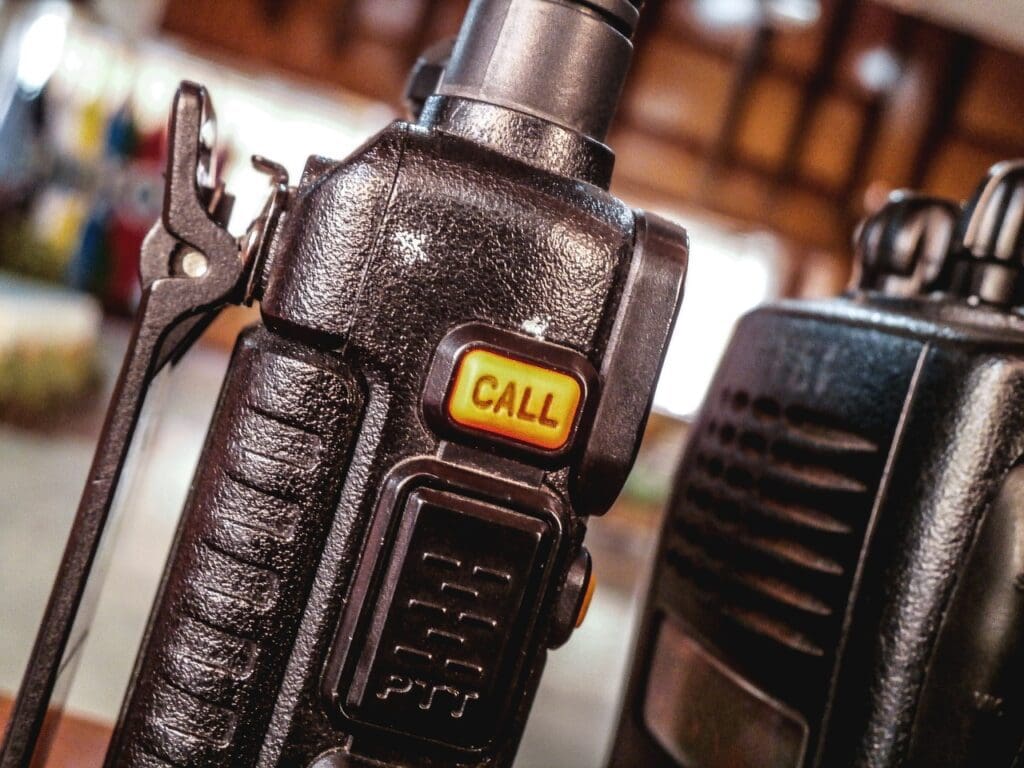A walkie-talkie is a great way to stay in touch with your team while you’re on the go; use them for emergencies where cellular receptions are spotty, and they’re an excellent tool for remote workers. They come in many forms, from traditional two-way radios to various emerging technologies. If you are planning to purchase one, it’s essential to consider several vital factors.
Table of Contents
How Do You Choose A Walkie Talkie?
It can be pretty tempting to pick the first walkie-talkie that comes your way. However, before you take this approach, it can be beneficial to consider some factors that will help determine which model is suitable for you. Understanding a few fundamental features and knowing the different types can help you narrow down your options so you can find the walkie-talkie that best meets your needs.
Whether it’s your first time buying one for your outdoor adventure, for leisure, or work, you need to get the “right” walkie-talkies that will serve your needs. At Walkie Talkie Central, they understand your every distinctive need, from ham radios to commercial-grade two-way radios to all the latest technologies.
Consider this a complete walkthrough guide that you’ll ever need before purchasing your walkie-talkie. We’ll cover the different types of crucial features and how they work.
Types Of Walkie Talkies
Walkie-talkies or what others call two-way radios are made of different types. Each type is designed to perform specific tasks, depending on their structure and features.
- VHF and UHF
VHF and UHF refer to the frequencies that walkie-talkies use. It’s essential to understand each frequency type to know which product is best for you. VHF stands for Very High Frequency, while UHF means Ultra High Frequency. The main difference between both types of radios lies in their range capability. UHF radios are capable of covering longer distances than VHF.
-
CB Radios
CB radios, or citizens band radios, have been around for decades and are known to be one of the most reliable walkie-talkie systems. In fact, they’re quite popularly used by truck drivers or folks who work on farms, usually operating from 26.965 to 27.405 MHz frequencies with up to 40 channels. They’re bulky and designed to be used with cars, trucks, jeeps, and off-road vehicles. While most walkie-talkies are short-range, with 2 to 3 miles of transmission range, CB radios have a range of 20 miles or more. As a result, they are mostly used by professional drivers.
- Ham Radios
Ham radio is a type of radio that allows users to communicate without the need for cellular networks. Ham radios were built to be used in emergencies where there’s no mobile service available. They can help save lives if well-managed by experts who have undergone proper training at accredited schools or organizations.
This type of walkie-talkie is big and bulky, but they’re durable. Unfortunately, they also use frequencies from 150 MHz to 440 MHz, far exceeding VHF and UHF range capabilities.
Ham radios typically offer better reception than standard FM radios and superior audio quality because they come with antennas and speakers rather than earbuds. As a result, you can easily hear your conversation partner loud and clear, even in noisy environments such as on construction sites. There are many different ham radio antenna types out there and choosing the right one for your radio can make a big difference in how it performs.
- FRS and GMRS
These types of walkie-talkies are ideal for family and group activities such as camping, hiking, road trips, or picnics. FRS stands for Family Radio Service, while GMRS is short for General Mobile Radio Service. These radio services were created by the UHF radio spectrum, which spans from 400 to 520 MHz frequencies.
FRS radios offer a maximum power output of 500mW while GMRS ones can produce up to 50 watts making them more powerful than their counterparts. Still, they also require an individual license to operate legally, even on personal use cases like going out with friends around town or playing during your backyard barbecues.
In addition, you need a particular type of equipment called FCC part 95B certification to use GMRS walkie-talkies legally.

Features To Check
When searching for the right walkie-talkies for your needs, there are a few key features to check.
- Channels
The number of channels will determine how many people can use your walkie-talkies at once. This is important to consider if you’re planning on using the devices for work or group communication purposes, as too few channels mean potentially missing out on vital messages during conversations between multiple parties.
- Talk Range
If you want to communicate long distances with your walkie-talkies, it makes sense to check their talk range capabilities before committing. This is because the distance a device can transmit over varies depending on its technology and power output.
Some offer up to 25 miles of coverage, while others may only be capable of transmitting across several feet. As such, make sure you understand precisely what sort of distances each model has to offer before making your decision.
- Durability And Design
Walkie-talkies are often used in challenging situations, so it’s essential to ensure that your chosen model is built to last. This includes buying a device with sufficient storage capabilities, an ergonomic design, and a weatherproof casing for safety during challenging conditions.
- Battery Life And Recharge Time
The battery life of walkie-talkies will directly affect how long they can be used between charges. If the devices spend most of their time in vehicles or stationary positions, this may not matter too much, but if your team uses them while on foot, you should consider how quickly each one recharges when required.
A rechargeable unit takes several hours to charge back up again fully. In contrast, some models only take 30 minutes, which may be an essential consideration if you need to make frequent transmissions or updates.
- Ease Of Use
Finally, the walkie-talkies you choose must be easy to use and understand right from the start. In addition, the devices should have large buttons for ease of access during emergencies when users could be distracted or panicked due to their surroundings.
Final Words
Walkie-talkies function by using two frequencies to talk between two or more people; one frequency is used for listening and the other for talking. It is important to note that these devices are not designed for spying on others. The best way to use walkie-talkies is outdoors, where there’s free space and no obstruction between radios receiver frequencies.
Featured Image by Gustavo Belemmi from Pixabay




